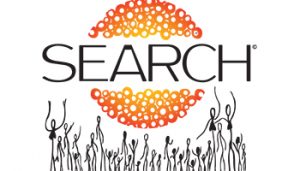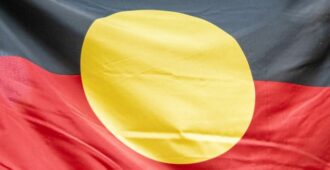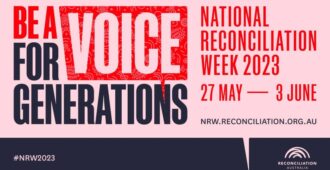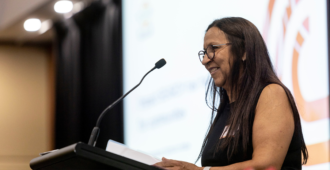 Leading ophthalmologist says progress on trachoma shows how cheap measures can have a dramatic effect on health.
Leading ophthalmologist says progress on trachoma shows how cheap measures can have a dramatic effect on health.
The gap in rates of blindness between non-Indigenous and Indigenous people has halved since 2008, a world-leading ophthalmologist, Prof Hugh Taylor, told a Closing the Gap conference in Melbourne on Thursday.
In 2006 rates of blindness were six times higher for Indigenous people. By 2016 this had dropped across Australia to being three times higher. Taylor said it was an example of how cheap and basic public health measures, such as providing clean water and hygiene, can have a dramatic effect on health.
“That’s still a terribly high gap but we have made a lot of progress,” said Taylor, from the University of Melbourne’s Indigenous eye health group.
“We think that there has been a significant increase in commonwealth recognition of this problem but we think there is $10m more a year more needed to completely close the vision gap by our target of 2020.”
Australia is the only developed country where trachoma is still prevalent and this burden of disease is suffered exclusively in Aboriginal and Torres Strait Islander communities. The disease was eliminated from mainstream Australia through improved sanitation about 150 years ago. Ten low- or middle-income countries have managed to completely eradicate trachoma before Australia.
The painful disease is caused by the bacterium Chlamydia trachomatis and, left untreated, it causes blindness. An infectious disease, it spreads easily, especially between children. Other key causes of blindness and eye disease in Aboriginal and Torres Strait islander people are cataracts, diabetes and eye conditions that have not been corrected with glasses.
Simply spreading the message of face and hand washing, and ensuring that Indigenous people had access to clean bathrooms, had gone a long way towards preventing the disease, Taylor said.
He is now pushing the commonwealth government to provide funding so his team can collect more data and identify where rates of eye disease are high and interventions such as antibiotics, improved living conditions and sanitation are needed. This data would be essential to closing the gap in eye health by 2020, he said.
On Thursday, the Closing the Gap steering committee released a report that found that the federal government had “failed to listen or act adequately or appropriately” to improve health and social outcomes for Aboriginal people. The report found across nearly every government-funded program, interventions were imposed and often rushed.
Darryl Wright, the chief executive of Tharawal (Campbelltown) Aboriginal Medical Service, said interventions to close the gap in health outcomes for Aboriginal and Torres Strait Islander people had to be led by Aboriginal community-controlled health organisations.
His is one of seven such organisations in New South Wales to have partnered with the Sax Institute in Sydney’s Search program, a long-term study of the health and wellbeing of urban Aboriginal Children.
One of Search’s flagship programs is the Hearing, Ear Health and Language Services (Heals) project, which treats Indigenous children who experience middle-ear disease. They suffer from ear diseases earlier, more often and with more complications than non-Indigenous children.
Left untreated it can lead to hearing loss, speech and language delays, and can significantly impact on schooling, ultimately causing difficulties in accessing higher education and employment. Most Aboriginal children in the youth justice system have untreated ear disease.
Wright said since partnering with Heals, more than 100 children in the region had received free surgery. Hundreds more had received treatment for associated conditions such as speech impediments.
“We go into schools and give kids hearing tests, and if problems are found we encourage them to come to the medical service for treatment,” he said.
“The results are amazing. You can see the result from the kids’ eyes and their faces. They can hear properly, they can pronounce words properly, and the doctors and speech therapists just love their work because they can see the difference they are making.
“We have heard so many stories of teachers and parents thinking these kids are lazy at school but in fact they had untreated hearing problems that were affecting their behaviour and education.”
Since 2013 more than 7,000 speech and language sessions and ear, nose and throat surgeries have been delivered in NSW as part of Heals.
Dr Hasantha Gunasekera, the Heals program manager and a doctor at The Children’s Hospital at Westmead, said despite the program’s proven success, funding from the NSW government needed to be secured every year.
He said the interventions were relatively cheap but saved significant costs in the long run. “It’s great that NSW has provided funding so far, but one-off funding is not the best way to do this,” Gunasekera said.
“What we need is recurrent funding so we can plan services across the year and expand so that screening and treatment is not just available to those areas where we have research partnerships.
“I would argue that this type of program should be available to everyone with an Aboriginal background in Australia.”
The key to the program’s success had been the leadership shown by Aboriginal community-controlled health organisations, he said.
“They organise appointments, arrange access to schools and appointments with therapists, they talk to families,” he said. “It’s another example of where this can work can be a good news story for Aboriginal people if everyone works together.”
Find out more
- This article was originally published on The Guardian. Read the full article.
- Find out about SEARCH (the Study of Environment on Aboriginal Resilience and Child Health)





